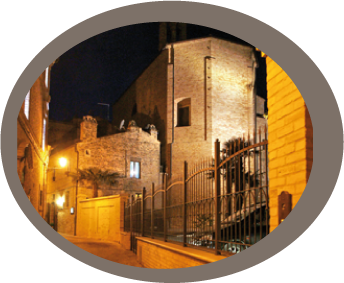Historical Background

Numerous archaeological finds give evidence that, in the Prehistorical period, small settlements were situated in what is today known as
Acquaviva Picena. These dwellings show that this area was already inhabited both during the Picene period and, later on, during the Roman period.
The site remained active, even after the submission of the Picenes to the Romans (VI century a.C.), thanks to its closeness to the city of
"Castrum Truentinum" (today a centre in the province of Teramo). Nonetheless, the territory came to life, resurfacing as a real urban centre, only with the arrival of the
invasion of the Barbarians.
In fact, the arrival of the
Saracens and of the Lombards induced the local populations to go into hiding in the nearby mountains and to take refuge from the continuous barbaric attacks. Thus the village was founded. It then became property of the Farfa family and moved on to become the feud of the Acquaviva family from where the town got its name. Halfway through the 1300s Acquaviva was handed over to the City of Fermo which took advantage of the villages particular position and turned it into an important garrison which was used to protect their coastal properties against the attacks of the City of Ascoli which was expanding its boundaries.
During the next century the population of Acquaviva multiplied. Consequently, the urban area grew and became
Terra Nuova (the new area facing the East) and
Terra Vecchia (the original area of the town facing the West). Each and every one of these historical facts reached us indirectly owing to the fact that most of the evidence in the Town Hall was destroyed during the course of Napoleon's campaign in Italy. However, we know for a fact that Acquaviva was annexed to the
Reign of Italy through a plebiscite which was held in 1860.